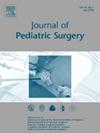LncRNA MEG9通过S100A9促进胆道闭锁患者的炎症和肝纤维化
IF 2.4
2区 医学
Q1 PEDIATRICS
引用次数: 0
摘要
本文章由计算机程序翻译,如有差异,请以英文原文为准。
LncRNA MEG9 Promotes Inflammation and Liver Fibrosis Through S100A9 in Biliary Atresia
Background
The pathogenesis of biliary atresia (BA) remains elusive. We aimed to investigate the role of long noncoding RNA (lncRNA) MEG9 in BA.
Methods
LncRNA microarray was conducted to identify differentially expressed lncRNAs in three BA and three para-hepatoblastoma liver tissues. RT-qPCR validated the results. Human intrahepatic bile duct epithelial cells (HIBECs) were stably transfected with lncRNA MEG9 knockdown/overexpression to investigate its cellular localization and function. RNA sequencing (RNA-seq), differentially expressed genes (DEGs) analysis and gene set enrichment analysis were applied to MEG9-overexpresed HIBECs. RNA pull-down and mass spectrometry explored the interacting protein of MEG9, while clinical information was reviewed.
Results
436 differentially expressed lncRNAs were identified, with MEG9 highly upregulated in BA. RT-qPCR further confirmed MEG9's overexpression in BA and diagnostic potential (AUC = 0.9691). MEG9 was predominantly located in the nucleus and significantly promoted cell proliferation and migration. RNA-seq revealed inflammation- and extracellular matrix-related pathways enriched in MEG9-overexpressing HIBECs, with upregulated cytokine genes like CXCL6 and IL6. MMP-7 and collagen I were also overexpressed. Furthermore, 38 proteins were identified to specifically interact with MEG9, and S100A9 was highly expressed in cell models. S100A9 was also significantly upregulated in BA liver tissue and correlated with MEG9 expression (r = 0.313, p < 0.05), albumin level (r = −0.349, p < 0.05), and platelet level (r = −0.324, p < 0.05).
Conclusion
MEG9 influences cholangiocyte proliferation, migration, and cytokine production, potentially regulating BA inflammation and fibrosis via S100A9 interaction.
求助全文
通过发布文献求助,成功后即可免费获取论文全文。
去求助
来源期刊
CiteScore
1.10
自引率
12.50%
发文量
569
审稿时长
38 days
期刊介绍:
The journal presents original contributions as well as a complete international abstracts section and other special departments to provide the most current source of information and references in pediatric surgery. The journal is based on the need to improve the surgical care of infants and children, not only through advances in physiology, pathology and surgical techniques, but also by attention to the unique emotional and physical needs of the young patient.

 求助内容:
求助内容: 应助结果提醒方式:
应助结果提醒方式:


